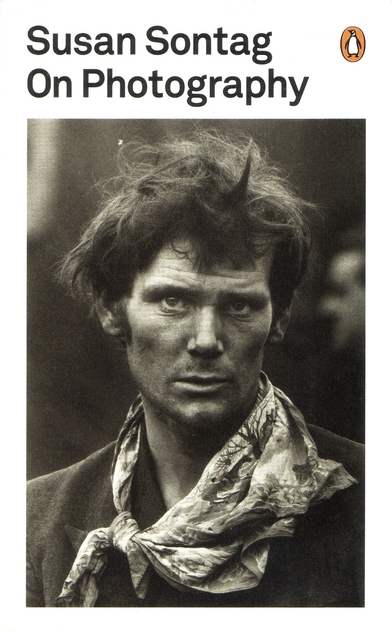
Об искусстве
4 вер. 2020
Nat Marenich
То, что мне доводилось читать во время обучения в академии и позже. На самом деле их оч много. Думаю есть смысл поместить в подборку только самые знаковые работы и авторов.
Дивится все
2
лайка
0
коментарів

Ренессанс и Барокко. Исследование сущности и становления стиля барокко в Италии.
Сочинение Вёльфлина открыло современникам новые методы стилистического анализа и иной взгляд на саму категорию барокко. В основу книги легла новая редакция перевода Е. Г. Лундберщ снабженная современным научным аппаратом. Издание содержит большое количество иллюстраций. Предназначено для специалистов и всех интересующихся изобразительным искусством.
Дивится все
0
0
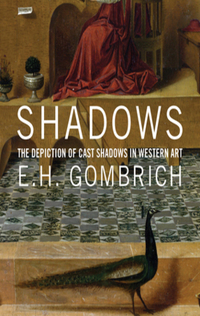
Тени в западном искусстве
В этой книге выдающегося историка искусств Эрнста Гомбриха рассматриваются особенности изображения теней в западной живописи. Автор обращает наше внимание на то, что обыкновенно ускользает от зрительского взгляда: почему тени появляются на живописных полотнах лишь изредка и для чего их использует художник? Начиная с эпохи Возрождения в одних случаях мастера подчеркивали их резкость, в других — намеренно уходили от их изображения. На примере знаменитых полотен автор показывает, как живописцы и графики разных направлений — от романтизма и импрессионизма до сюрреализма — использовали тени для придания изображению большей реалистичности или драматизма. Рассматривая восприятие теней в мифологии и западной философии, Гомбрих анализирует факторы, определяющие их изображение: форму, расположение, источник света, а также положение зрителя. Книга рассчитана на широкий круг читателей и всех интересующихся историей искусства.
Дивится все
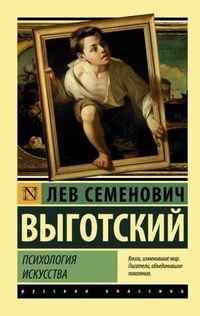
Психология искусства
Лев Семенович Выготский (1896-1934) — российский психолог, внесший большой научный вклад в сферу общей и педагогической психологии. Автор культурно-исторической теории поведения и развития психики человека. Вниманию читателей предлагается книга «Психология искусства», в которой ученый обобщает свои работы 1915—1922 гг. Труд посвящен анализу закономерностей эстетического восприятия и является фундаментальнойработой, характеризующей развитие советской теории и искусства.
Дивится все
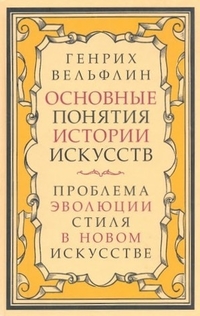
Основные понятия истории искусств
Книга Г. Вёльфлина «Основные понятия истории искусств» обязательна к прочтению для каждого, кто интересуется историей искусств. Вёльфлин одним из первых выделил основные понятия, приемы, проблемы западноевропейской живописи и архитектуры XV—XVII веков, чтобы свести воедино историю и причины их развития. На примерах шедевров Ренессанса и барокко он демонстрирует читателю различия в видении художников разных веков, которые и составляют основу того, что мы называем «стилем» художественных произведений. Классический перевод А. А. Франковского публикуется в современной орфографии. В ЭБС «Юрайт» читатель найдет цветные версии включенных в книгу иллюстраций, а также дополнительные иллюстрации, отсутствующие в издании «Академии» 1930 г.
Дивится все
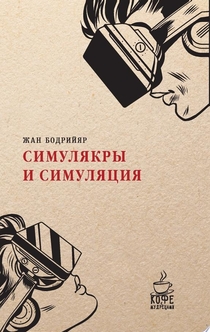
Симулякры и симуляция
"Симулякры и симуляции" - последняя работа выдающегося философа-постмодерниста, культуролога и социолога Жана Бодрийяра. Самая полная и доступная для восприятия книга подобной тематики, с которой можно начинать погружение в мир современной философии. Автор дает наиболее развернутые определения таким понятиям как, "гиперреальность" и "симулякры", давно уже вошедших в массовый обиход. Это произведение помогло множеству людей по всему миру взглянуть на нашу реальность с принципиально иной стороны, с позиции признания ее фиктивной, поддельной, "копией копии", иллюзорной субстанцией, а также вдохновила кинематографистов на создание культового фильма "Матрица".
Дивится все

Заговор искусства
"Совершенное преступление" – это возвращение к теме "Симулякров и симуляции" спустя 15 лет, когда предсказанная Бодрийяром гиперреальность воплотилась в жизнь под названием виртуальной реальности, а с разнообразными симулякрами и симуляцией столкнулся буквально каждый. Но что при этом стало с реальностью? Она исчезла. И не просто исчезла, а, как заявляет автор, ее убили. Убийство реальности - это и есть совершенное преступление. Расследованию этого убийства, его причин и следствий, посвящен этот захватывающий философский детектив, ставший самой переводимой книгой Бодрийяра. "Заговор искусства" – сборник статей и интервью, посвященный теме современного искусства, на которое Бодрийяр оказал самое непосредственное влияние. Его радикальными теориями вдохновлялись и кинематографисты, и писатели, и художники. Поэтому его разоблачительный "Заговор искусства" произвел эффект разорвавшейся бомбы среди арт-элиты. Но как Бодрийяр приходит к своим неутешительным выводам относительно современного искусства становится ясно лишь из контекста более крупной и многоплановой его работы "Совершенное преступление". Данное издание восстанавливает этот контекст.
Дивится все
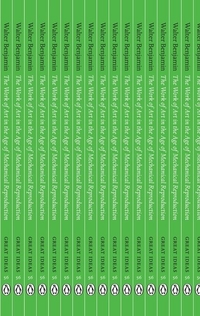
Произведение искусства в эпоху его технической воспроизводимости / The Work of Art in the Age of Mechanical Reproduction

Искусство и визуальное восприятие / Art and Visual Perception
"In The Ego and the Id Freud argued that a cogent thought process, to say nothing of conscious intellectual work, could not exist amidst the unruliness of visual experience. Over the last half century in a sequence of landmark books, Rudolf Arnheim has not only shown us how wrong that is, he has parsed the grammar of form with uncanny acuity and taught us how to read it."--Jonathan Fineberg, author of Art since 1940: Strategies of Being "It is a book of first-rate importance, and many aspects of the psychology of art are for the first time given a scientific basis. It is sure to have a far-reaching influence, and artists themselves would benefit from reading it."--Sir Herbert Read
Дивится все

Визуальное мышление / Visual Thinking
"Groundbreaking when first published in 1969, this book is now of even greater relevance to make the reader aware of the need to educate the visual sense, a matter so harmfully neglected in the present system."--Peter Selz, author of Nathan Oliveira "Freud argued that a cogent thought process, to say nothing of conscious intellectual work, could not exist amidst the unruliness of visual experience. Over the last half century in a sequence of landmark books, Rudolf Arnheim has not only shown us how wrong that is, he has parsed the grammar of form with uncanny acuity and taught us how to read it. Few books continue to speak to the generations after them; Visual Thinking is one of those rare exceptions."--Jonathan Fineberg, author of Art Since 1940
Дивится все
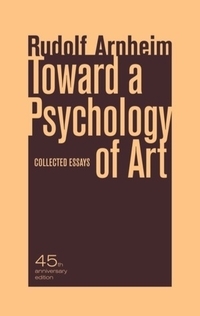
Toward a Psychology of Art
From the Introduction:The papers collected in this book are based on the assumption that art, as any other activity of the mind, is subject to psychology, accessible to understanding, and needed for any comprehensive survey of mental functioning. The author believes, furthermore, that the science of psychology is not limited to measurements under controlled laboratory conditions, but must comprise all attempts to obtain generalizations by means of facts as thoroughly established and concepts as well defined as the investigated situation permits. Therefore the psychological findings offered or referred to in these papers range all the way from experiments in the perception of shape or observations on the art work of children to broad deliberations on the nature of images or of inspiration and contemplation. It is also assumed that every area of general psychology calls for applications to art. The study of perception applies to the effects of shape, color, movement, and expression in the visual arts. Motivation raises the question of what needs are fulfilled by the production and reception of art. The psychology of the normal and the disturbed personality searches the work of art for manifestations of individual attitudes. And social psychology relates the artist and his contribution to his fellow men. A systematic book on the psychology of art would have to survey relevant work in all of these areas. My papers undertake nothing of the kind. They are due to one man's outlook and interest, and they report on whatever happened to occur to him. They are presented together because they turn out to be concerned with a limited number of common themes. Often, but unintentionally, a hint in one paper is expanded to full exposition in another, and different applications of one and the same concept are found in different papers. I can only hope that the many overlappings will act as unifying reinforcements rather than as repetitions. These papers represent much of the output of the quarter of a century during which I have been privileged to live, study, and teach in the United States. To me, they are not so much the steps of a development as the gradual spelling-out of a position. For this reason, I have grouped them systematically, not chronologically. For the same reason, I did not hesitate to change the words I wrote years ago wherever I thought I could clarify their meaning. Removed from my original intimacy with the content, I approached the text as an unprepared reader, and when I stumbled, I tried to repair the road. In some instances, I recast whole sections, not in order to bring them up to date, but in the hope of saying better what I meant at the time. Some of the earlier papers led to my book, Art and Visual Perception, which was written in 1951 and first published in 1954- Sections of the articles on perceptual abstraction, on the Gestalt theory of expression, and on Henry Moore are incorporated in that book. Others continued where the book left off, for instance, the attempts to describe more explicitly the symbolism conveyed by visual form. The short piece on inspiration provided the substance for the introductory chapter on creativity in my more recent book, Picasso's Guernica. Finally, in rereading the material, I was surprised to find how many passages point to what is shaping up as my next task, namely, a presentation of visual thinking as the common and necessary way of productive problem solving in any human activity. Ten of the papers in this book were first published in the Journal of Aesthetics and Art Criticism. To mention this is to express my indebtedness to the only scholarly periodical in the United States devoted to the theory of art. In particular, Thomas Munro, its first editor, showed a great trust in the contribution of psychology. He made me feel at home among the philosophers, art historians, and literary critics whose lively propositions inhabit the hostel he founded and sustained. To him, as well as to my friends of the University of California Press, who are now publishing my fourth book, I wish to say that much of what I thought about in these years might not have been cast into final writing, had it not been for their sympathy, which encouraged the novice and keeps a critical eye on the more self-assured pro. There are a few scientific papers here, originally written for psychological journals but free, I hope, of the terminological incrustation that would hide their meaning from sight. There are essays for the educated friend of the arts. And there are speeches, intended to suggest practical consequences for art education, for the concerns of the artist, and for the function of art in our time. These public lectures are hardly the products of a missionary temperament. In fact, I marveled why anybody would go to a theorist for counsel, illumination, and reassurance in practical matters. However, when I responded to such requests I noticed, bewildered and delighted, that some of my findings pointed to tangible applications, which were taken to be useful.
Дивится все

Открытое произведение. Форма и неопределенность в современной поэтике
Умберто Эко – знаменитый итальянский писатель, автор мировых бестселлеров «Имя розы» и «Маятник Фуко», лауреат крупнейших литературных премий, основатель научных и художественных журналов, специалист по семиотике, историк культуры. Его труды переведены на сорок языков. Очерки, включенные в эту книгу, родились из доклада «Проблема открытого произведения», прочитанного на XII Международном философском конгрессе в 1958 г. В 1962 г. они появились под заголовком «Открытое произведение» и были дополнены обстоятельным исследованием, посвященным поэтике Джойса, где автор пытался проследить развитие этого художника. Настоящий сборник продолжает серию научных работ Умберто Эко, изданных на русском языке.
Дивится все
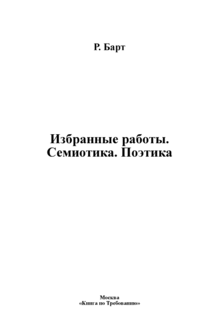
Избранные работы. Семиотика. Поэтика
В сборник избранных работ известного французского литературоведа и семиолога Р. Барта (1915—1980) вошли статьи и эссе, отражающие разные периоды его научной деятельности. Исследования Р. Барта — главы французской «новой критики», разрабатывавшего наряду с Кл. Леви-Строссом, Ж. Лаканом, М. Фуко и др. структуралистскую методологию в гуманитарных науках, посвящены проблемам семиотики культуры и литературы. Среди культурологических работ Р. Барта читатель найдет впервые публикуемые в русском переводе «Мифологии», «Смерть автора», «Удовольствие от текста», «Война языков», «О Расине» и др. Книга предназначена для семиологов, литературоведов, лингвистов, философов, историков, искусствоведов, а также всех интересующихся проблемами теории культуры.
Дивится все
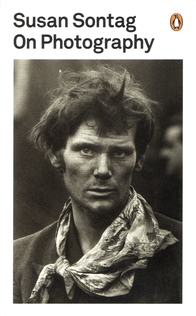
On Photography
Susan Sontag's On Photography is a seminal and groundbreaking work on the subject.Susan Sontag's groundbreaking critique of photography asks forceful questions about the moral and aesthetic issues surrounding this art form. Photographs are everywhere, and the 'insatiability of the photographing eye' has profoundly altered our relationship with the world. Photographs have the power to shock, idealize or seduce, they create a sense of nostalgia and act as a memorial, and they can be used as evidence against us or to identify us. In these six incisive essays, Sontag examines the ways in which we use these omnipresent images to manufacture a sense of reality and authority in our lives.'Sontag offers enough food for thought to satisfy the most intellectual of appetites'The Times'A brilliant analysis of the profound changes photographic images have made in our way of looking at the world, and at ourselves'Washington Post'The most original and illuminating study of the subject'New YorkerOne of America's best-known and most admired writers, Susan Sontag was also a leading commentator on contemporary culture until her death in December 2004. Her books include four novels and numerous works of non-fiction, among them Regarding the Pain of Others, On Photography, Illness as Metaphor, At the Same Time, Against Interpretation and Other Essays and Reborn: Early Diaries 1947-1963, all of which are published by Penguin. A further eight books, including the collections of essays Under the Sign of Saturn and Where the Stress Falls, and the novels The Volcano Lover and The Benefactor, are available from Penguin Modern Classics.
Дивится все
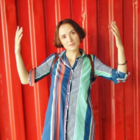
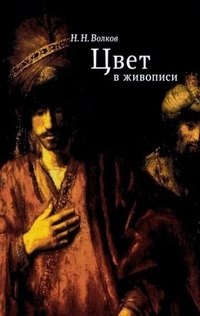
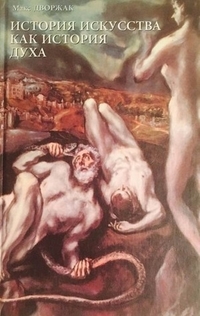






Коментарі